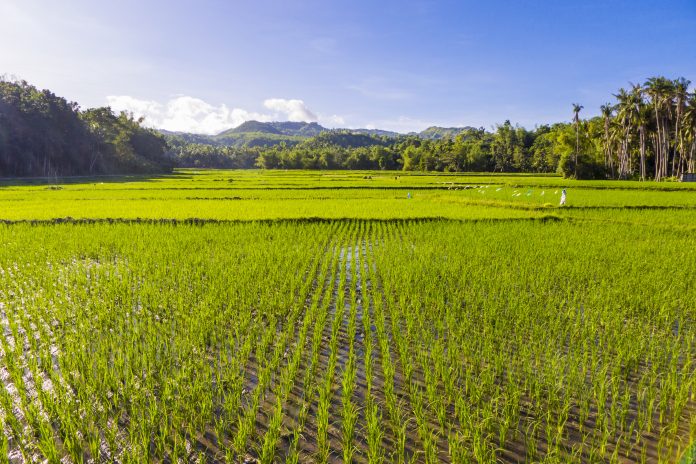Aarthi JanakiRaman, Research Director, Chemicals and Advanced Materials at TechVision, Frost & Sullivan, argues that the rice crop is a vital cog in ensuring food security
The last five years have transformed the way we perceive food and how it is produced. Economic progress, climate change and evolving consumer choices have influenced the way food has been cultivated and consumed.
The agriculture industry is no longer a stand-alone entity, but is integrated with other industries such as ICT, finance and manufacturing, all of which make a mark in day-to-day agricultural activities. While rapid progress of the agricultural sector is witnessed, food security remains a global issue and a major concern in certain parts of the world, especially third world countries. A stable, sustained, affordable and nutritious food supply is the goal of many nations and most of the investment activities for agriculture are focused on achieving this aim. Given the food security goal, staple crops such as maize, wheat and rice are of focus as they contribute significantly to addressing food security challenges across the world.
Role of rice in ensuring food security
Rice is one of the major staples and is considered the primary nutrient source for more than 3 billion people. While rice is traditionally associated with Asian countries, it’s no longer confined to this geographical region. It is a staple crop in parts of Africa and Latin America and is also gaining a foothold in parts of Europe and the UK. The crop is grown in more than 150 million hectares across the world and is of critical importance to the economies of various nations, especially in South-East Asia, China and India to name a prominent few.
Despite cultural shifts, rice is expected to be a mainstream nutrient crop for more than one-fifth of the world’s population in the next decade. This highlights its importance in ensuring food security. While the role of rice in the food and agrarian ecosystem is well-established, traditional rice- producing countries are facing challenges of shrinking arable land due to industrialisation, resource scarcity and climate change effects. Rice cultivation is amongst the topmost crops that are likely to be affected by climate change activities considering that the majority of its cultivation occur in tropical and delta lands that are prone to floods. It is also prone to fungal diseases such as rice blast that still has devastating effects on crop yield and quality, and is a cause of major concern to rice farmers across the globe. Therefore, it is critical to define steps that can ensure the future of rice cultivation and its role in ensuring food security.
Call for action
To ensure the continued role of rice as a viable crop to satiate world hunger, a multi-faceted approach is needed from cultivation to retail to overcome challenges and address inefficiencies. A few of the major action points include the following:
Enhancing productivity & yield
A paramount need of the hour is to increase the yield potential, stability and ensure the nutrient value of the rice crop. To effectively increase rice production and mitigate pre- and post-harvesting losses, an integrated management approach, starting from the choice of a rice variety to post-harvesting activities is needed. Apart from constant monitoring and implementation of integrated pest management activities, the choice of apt breed plays a major role in deciding the quality of output. Countries such as Thailand, Indonesia, Vietnam, China and India have ongoing R&D programs to develop the disease- and drought-resistant varieties, which can ensure yield while having minimal adverse effects on the environment.
The success of the Riceberry variety of rice from research activities in Thailand has served as a rejuvenation factor for R&D programs in the region. Considering that rice breeding research is a long and difficult process, advances in technologies such as genomics and marker-assisted breeding are helping researchers to explore and identify genes that can help in developing better seed traits. The use of transgenic technologies and leveraging genebank data will help researchers to introduce desired traits and engineer new varieties of plants that can maximise yield. Molecular breeding approaches can also help in introducing resistance to biotic and abiotic stresses and help crop combat diseases such as rice blast that has a devastating effect on crop yield.
Handling economic & consumer behaviour changes
Evolving consumer interests, changing rural-urban income disparities, especially in South-East Asian countries, where rice cultivation is still predominant has a direct impact on the future of rice farming. Policy reforms, especially pricing policies of individual countries have a significant impact on rice farming activities. Governmental efforts and incentives to implement mechanisation and diversification, adopt biological crop protection aids to reduce the dependence on synthetic fertilizers and pesticides can help in reviving rice cultivation.
A sequential approach towards consolidation of activities from “farm to fork” and the use of trade to manage price volatilities can go a long way to ensure income to farmers and reduce the exit of people from agricultural activities.
Managing agricultural inputs & supply chain changes
Another key action point is to ensure transparency and connectivity in all aspects of the supply chain to mitigate risks, reduce costs and crop damage due to improper storage, handling and other environmental factors. The adoption of sensors, communication and digital technologies can help in the traceability of the supply chain and also manage economies of scale.
These technologies along with precision agriculture can help in managing input changes and increase the efficiency of crop research and field trials. They can also help in better management of inputs such as water, crop protection aids and assist in real-time monitoring of crop health and pest control activities. The automation and use of UAVs can transform the current labour-intensive, weather-dependent rice cultivation systems to a more mechanised one that is less dependent on weather extremities.
Mitigating climate change risks
Proper water and soil management and the use of ecological engineering can significantly help reduce the environmental footprint of rice cultivation, especially those related to high water consumption and nitrogen components in soil. Site-specific nutrient management systems can reduce GHG emissions and help in carbon sequestration from soil organic matter.
The final word
There is a need to develop an integrated approach that helps envision a future for rice production. A combined effort of continued research efforts in developing disease and drought-resistant varieties, pest management and interventional protocols, technology delivery, outreach programs and policy reforms can help in ensuring rice cultivation meets the supply- demand scenario while continuing to play a vital role in global food security.
A more scientifically based approach that spans across soil-, crop-, pest- and supply chain management will not only improve crop and soil health, but also address the supply-demand vagaries and mitigate challenges in ensuring food security.












How can we increase women participation in rice farming at the rural developing nations to help alleviate poverty and hunger and most importantly food security.